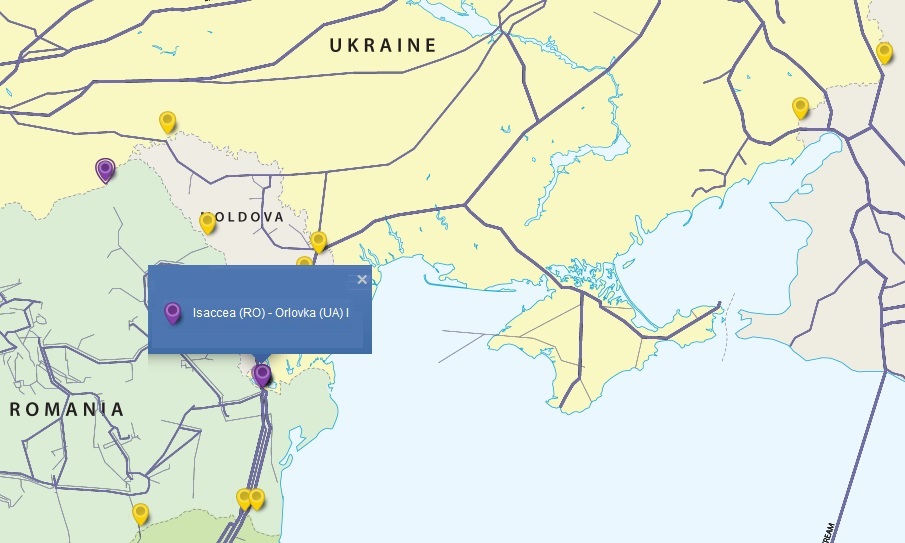PJSC “UKRTRANSGAZ” successfully conducted market demand assessment for entry capacities to Ukraine from Romania via Trans-Balkan pipeline

17 May 2018, Kyiv – 11 leading European and Ukrainian gas trading companies expressed their interest in natural gas transportation in direction RO-UA for the total capacity of up to 10(!) billion cubic meters per year, exceeding the offered capacities 2 times.
PJSC “UKRTRANSGAZ” pro-actively continues integration to the European gas system and creates additional diversified routes of gas supply to Ukraine. The TSO keeps preparation to switching to direct cooperation with adjacent TSOs in accordance with the EU regulations for all cross-border entry/exit points, which will be possible in 2020 after the termination of transit contract with Gazprom.
Transit-1 pipeline is one of three main pipelines of Trans-Balkan route, which is currently used for natural gas transportation from Russian Federation to Bulgaria, while Gazprom’s long-term booking contract of the pipeline on Romanian territory expired in 2016. This means that the rules of utilization of this infrastructure shall be harmonized with the requirements of the EU legislation, in particular for Third party access to the pipeline. At the same time, Ten Year Network development plan of SNTGN Transgaz SA prescribes the project of interconnection of the national gas transmission system and the offshore fields with the Transit-1 natural gas pipeline. The TSOs of Ukraine and Romania have agreed on the reconstruction of gas metering station Isaccea-1, allowing to increase the accuracy of gas metering and allow bidirectional flow in the interconnection point. Therefore, Trans-Balkan pipeline is a promising alternative route of gas supply to Ukraine, especially if we take into account the commissioning of TANAP, LNG terminals in Greece and Turkey and expected growth of natural gas production in Romanian Black Sea offshore fields.
Taking into consideration the abovementioned, PJSC “UKRTRANSGAZ” from 30 March to 30 April 2018 conducted non-binding market demand assessment among the participants of Ukrainian and EU market for the firm capacity of Transit-1 pipeline in direction RO-UA. 5 billion cubic meters of annual capacities were offered to market participants.
The table below shows the aggregated results of assessment with annual breakdown:
|
Gas year |
Demand for the capacity in RO-UA direction |
|
|
Daily demand (mcm/d) |
Annual demand (bcm/a) |
|
|
2020 |
21.71 |
7.92 |
|
2021 |
22.97 |
8.38 |
|
2022 |
23.66 |
8.63 |
|
2023 |
27.65 |
10.09 |
|
2024 |
22.65 |
8.27 |
|
2025 |
22.65 |
8.27 |
|
2026 |
22.65 |
8.27 |
|
2027 |
21.97 |
8.02 |
|
2028 |
21.97 |
8.02 |
|
2029 |
21.97 |
8.02 |
|
2030 |
21.97 |
8.02 |
|
2031 |
15.04 |
5.49 |
|
2032 |
15.04 |
5.49 |
|
2033 |
11.05 |
4.03 |
|
2034 |
11.05 |
4.03 |
The demand for 2023 gas year exceeded the offered value two times, while in the period from 2020 to 2030 – 1.6 times. Such interest of leading UA and EU market participants is a powerful signal for the TSOs in the region on the strong need to move forward with implementation of the bidirectional Trans-Balkan pipeline project. Taking into account the aggressive plans of Gazprom to commission Turkish Stream, which will lead to significant decrease of transportation via Trans-Balkan pipeline, the European Commission and the TSOs of Greece, Bulgaria, Romania, Ukraine and Moldova created a working group aimed at introducing the possibility of bidirectional natural gas transportation via Trans-Balkan pipeline from Greece to Ukraine (“South-North corridor”). Implementation of the project will be a huge incentive for facilitation of integration of natural gas markets of Southern Europe and will ensure security of gas supply to the Balkan region countries. It should be noted that the project does not require additional investments from the TSOs, as it is planned to use already existing infrastructure.
As the next step, PJSC “UKRTRANSGAZ” plans to develop required technical measures and conduct binding Open Season procedure. New capacities for this direction shall be available to market participants starting from the beginning of 2020.
